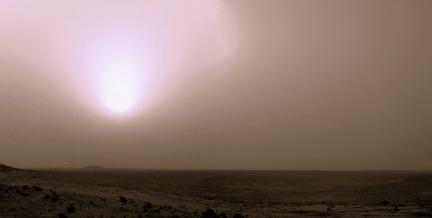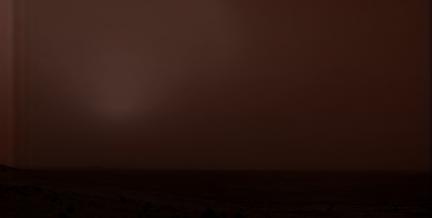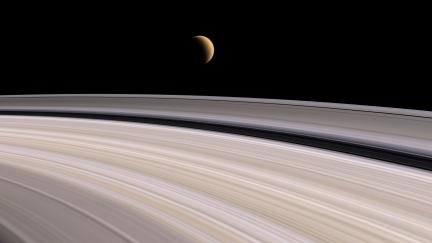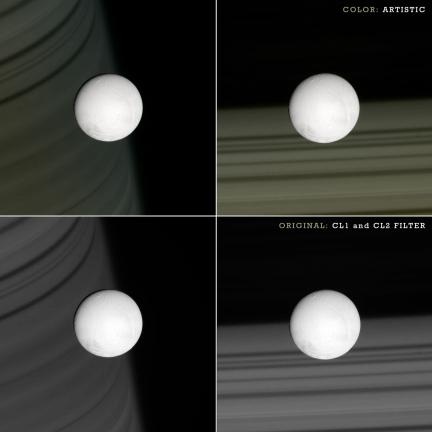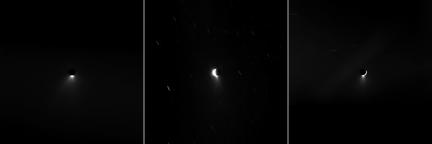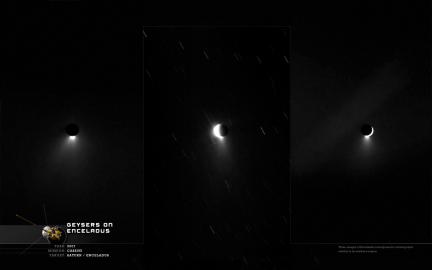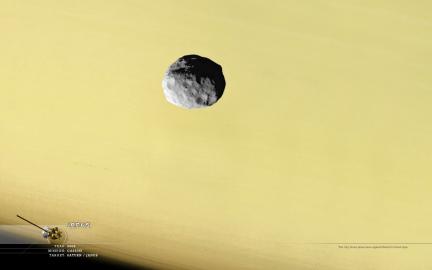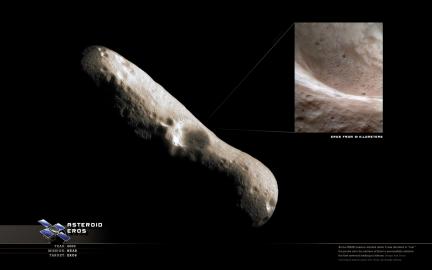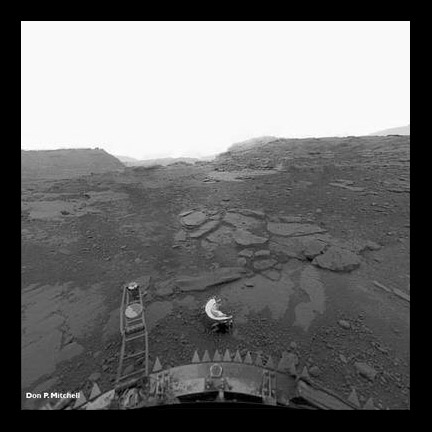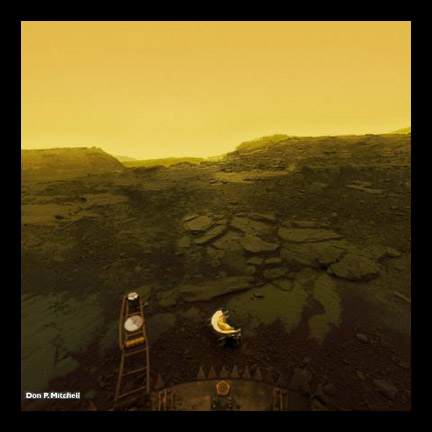When the Voyagers sped through the outer Solar System in the 1980’s they returned the first images of the smaller moons of the Solar System, those of Saturn and Uranus. These bodies are large enough to maintain a spherical shape – but are considerably smaller than the junior planet sized class of moons which would include Titan, our own moon and a five others. At these smaller sizes (ranging from around 400 km to 800 km in diameter) the gravity is expected to be too weak to hold down any kind of atmosphere and the mass too small to generate any kind of internal heating. These are two factors that usually result in any kind of intriguing features like weather, volcanos, tectonics, geysers or more simply – anything that is not just another crater or the result of some kind of an impact. Nobody was expecting to find anything of interest which could be dated as any newer than from the time around which the Solar System was formed. Even our own moon, at its much larger scale, is for the most part “dead” and has been unchanged since it cooled off millions of years ago.
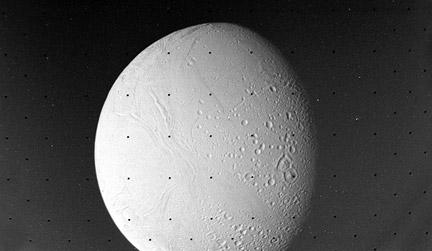
Well, whenever making assumptions about what one might expect to find upon exploring the Solar System, we are always prepared to be delightfully wrong. One the smaller moons of Saturn, named Enceladus, did turn some heads when the Voyagers sped by in the early 80’s (see above), but it wasn’t until Cassini arrived that it turned out to be an unexpected jewel in Saturn’s crown. From some vantage points, looking at Enceladus you might note the “muddy” looking impact craters on the surface and the unusually smooth surface in some regions, but apart form that – you would think that Enceladus was much like the other smaller moons of Saturn and Uranus – cold, cratered and frozen to the core. There didn’t seem to be anything going on around this tiny world any newer than perhaps a few tens of millions of years.

In 2005, the Cassini spacecraft got a better look at Enceladus and in particular noted a large area somewhat devoid of impact craters with unusually smooth ridges or “tiger stripes” (see above image of Enceladus from 172km) in a large southern region of the small moon. A lack of impact craters usually tells us that what we’re looking at is geologically active and depending on how few there are, tells you how young the surface is. The lack of almost any kinds of craters in this southern region led some to wonder if there may be some kind of unexpected activity going on, namely geysers (see below).

so in 2006, Cassini took an over-exposed look at a thin crescent Enceladus and there it was… a number of active geysers spewing out water ice miles into the space around Enceladus. Suddenly this tiny cold dead world leapt to life and is even rivaling Europa at Jupiter in terms of generating excitement for possibilities of finding life. Here on Earth we have come to expect life to rise anytime you have water in some fashion available. Life forms it seems, especially ones called extremophiles, seem to figure out a way to survive without sunlight, oxygen and nearly every other element larger animals like us need to survive. The only one thing that seems to always need to be present though is water. So whenever scientists find water in some form on another world, speculation starts to rise in the possibilities that life may have taken a foothold there and could possibly have survived and evolved to the present day.
Theories are still being drawn up to explain the activity on a world that should be frozen solid to the core and as “dead” as an asteroid. A likely guess is that something akin to what is happening on Europa is also happening at Enceladus. Its proximity to Saturn and the fact that it is largely made of something more easily melted such as water ice instead of rock (as Mimas is, which is actually in even closer to Saturn). What is curious is why the activity is isolated to the southern region? Up north the moon looks almost as battered as any other which establishes that these regions are fairly old.
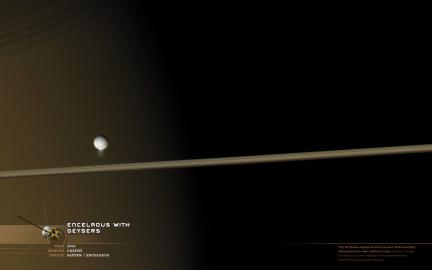
For some years now a Europa Orbiter mission has be on the drawing boards at NASA, but many have begun to challenge the idea that the next Cassini/Galileo class mission to the outer Solar System should be to Enceladus instead of Europa. While Europa is active in some form, it is unclear what one may find at the surface. The meat of what we’re looking for may be miles below the icy crust and nobody is sure what kind (if any) of access there may be even at places where the ridges seem fresh and recently broken. Whereas, on Enceladus, there are active geysers currently releasing materials into space which makes capturing some of the materials much easier if not actually having access through some form of cryo-caldera. One attractive idea is to have some form of mission to Saturn/Enceladus that works similarly to the way Stardust worked. Simply fly in close to the active region, open up the collector and return it to earth. This worked fantastically at the comet Wild 2 and there is no reason to believe that it couldn’t work just as well at Enceladus.
NOTE: At the time of this writing, some questions have been raised about the nature of the geysers on Enceladus. A new model proposes that these fountains may not be composed of water ice.
WALLPAPER NOTE: the wallpaper image above is a composite image where the overall scene is actual, but the details of Enceladus’s geysers are from actual images of the geysers laid over the top of the background image. In actuality, the details of the geysers are only visible with over-exposed images which would make the relatively well exposed background scene impossible to image in the same exposure.
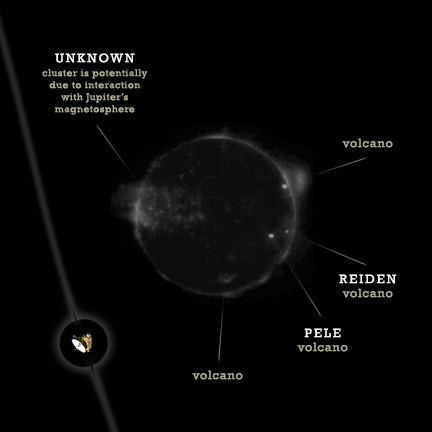 This is a bit old taken from February 2007’s New Horizons encounter at Jupiter. A very noisy image was released of Io on the dark side of Jupiter that illustrated the glowing lights of lava flows and auroral displays in Io’s tenuous atmosphere interacting with Jupiter’s magnetosphere.
This is a bit old taken from February 2007’s New Horizons encounter at Jupiter. A very noisy image was released of Io on the dark side of Jupiter that illustrated the glowing lights of lava flows and auroral displays in Io’s tenuous atmosphere interacting with Jupiter’s magnetosphere. 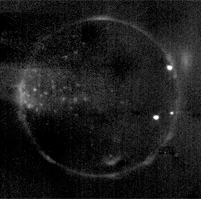 Noise always bothers me and there has been a desire to somehow clean up the presentation of this fantastic image.
Noise always bothers me and there has been a desire to somehow clean up the presentation of this fantastic image.